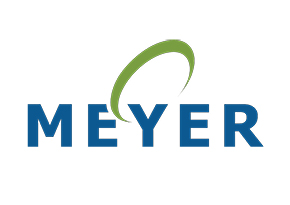Structural Timber
Mankind has been successfully using timber structurally for buildings for millennia. Today a wide range of engineered structural timber solutions are commonly used in the UK and elsewhere, each one with its benefits and most appropriate applications.
Using our FAQs, simple guides and our National Structural Timber Specification (NSTS) below, let us help you choose and detail the right solution for each project.
For design consultancy, inspections, testing, third-party certification and training on structural timber products, call our technical helpline on +44 (0)1494 569601. All commercial services are provided by TRADA’s service provider, Exova BM TRADA.

How is timber strength graded?
Timber intended for structural use must be strength graded, to give a basic prediction of its structural performance and ensure it is at least strong enough for the highest expected load.
Timber is graded in accordance with BS EN 14081.
Strength grading can be carried out by visual inspection according to strictly defined rules, or by a grading machine.
Once the strength grade is known, together with the species, a strength class can be assigned, which leads to the characteristic values needed for structural design. Strength-graded timber must be CE marked under the Construction Products Regulation (CPR).
WIS 4-7: Timber strength grading and strength classes provides detailed information on timber strength grading processes and requirements.
Is sapwood permitted in structural timber?
Yes. The strength-grading process, both mechanically and visually, takes no account of the end use of the timber.
Many of the softwoods used for structural purposes, such as European redwood, will nearly always contain a significant amount of sapwood as the trees are small in diameter.
Sapwood does not affect the strength, but only the durability of the timber. Preservation treatment is therefore an important consideration.
What are the benefits of using glulam components as structural timber?
Glulam is a high-performance product for structural engineering manufactured from layers of parallel timber laminations.
Its benefits include:
• Aesthetically attractive structural timber components of large sizes and complex shapes
• Generally stronger than the timber from which it is made because defects such as knots, splits and sloping grain, are randomly distributed throughout the component or simply excluded
• It has a high strength-to-weight ratio that makes it easy to handle
• It will usually have better dimensional stability and suffer less from shrinkage and deformation than equivalent solid wood sections.
For more information on glulam, its properties and uses, see WIS 1-6: Glued laminated timber.
What are the structural benefits of building with cross-laminated timber (CLT)?
The structural benefits of CLT are many and include:
• high axial load capacity for walls due to the large bearing area
• high shear strength to resist horizontal loads
• dead weight reduces the need for mechanical holding down to resist overturning forces
• buckling in the plane of the wall is unlikely, except for isolated columns and piers
• contributes to fire resistance
• shallow floors
• structural fixings are easy to provide and likely to achieve their design capacity
• few defects due to the inherent robustness of the panels during transport and construction
• enhanced airtightness
• in some situations, second fix items and cladding can be fixed directly to panels using lightweight power tools.
Comprehensive information on CLT, its properties and uses can be found in WIS 2/3-61: Cross-laminated timber: introduction for specifiers and WIS 2/3-62: Cross-laminated timber: Structural principles
Can hardwood species be specified for structural use?
Although softwoods have largely displaced hardwoods as a structural material in modern construction, hardwoods are used for specialist engineered products including glued laminated (glulam) and mechanically laminated (mechlam) timber, and for particular end uses where their high strength and durability is vital, such as marine structures and sea defences.
When compared with structural softwoods, hardwoods in the medium-to-high-density ranges have:
• greater strength and stiffness
• availability in longer lengths and larger sections
• higher density, generally giving superior fire resistance
• greater natural durability in most species
• more varied aesthetic appeal as exposed members.
Guidance on how to specify hardwoods for structural use can be found in WIS 1-17: Structural use of hardwoods.
How do I specify wood-based panels for structural use?
The simplest and most effective way of specifying a panel product for structural use is to require compliance with BS EN 13986 and a technical class. It is mandatory under the Construction Products Regulation (CPR) to CE mark these products.
The specification should include at least the following factors:
• Panel type – this may be generic, such as plywood, or a more specific technical class
• Thickness
• Fire performance rating
• Durability requirement
• Formaldehyde class.
When specifying panel type:
• Select a load-bearing panel type complying with BS EN 13986. Refer to the appropriate product Standard, such as BS EN 312.
• Determine the service class for which the panel should be suitable.
• Establish minimum strength and stiffness properties – specify minimum characteristic values.
Additional properties may be required depending on the use.
Detailed guidance is provided in Panel Guide v4 and WIS 2/3-57: Specifying wood-based panels for structural use.

































